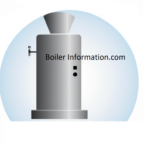Thus, rather than dissolving, nonpolar substances (such as oils) stay separate and form layers or droplets when added to water. Hydroxide salts of Group II elements (Ca, Sr, and Ba) are slightly soluble. Here is another easy experiment that can be done (with proper supervision) in an organic laboratory. Direct link to Ese Solo's post why cant oil spread evenl, Posted 7 years ago. Why water makes a good solvent, and what kinds of molecules dissolve best in it. How will a strong lattice energy affect solubility of a crystal lattice. Plants, on the other hand, can produce all 20. 3. Sodium chloride (common table salt), for example, consists of sodium ions and chlorine ions arranged in a lattice so that each sodium ion is surrounded by six equidistant chlorine ions and each chlorine ion is surrounded by six equidistant sodium ions. To which of the following categories of molecules do these smaller molecules belong? In the organic laboratory, reactions are often run in nonpolar or slightly polar solvents such as toluene (methylbenzene), hexane, dichloromethane, or diethylether. Now, the balance is tipped in favor of water solubility, as the powerfully hydrophilic anion part of the molecule drags the hydrophobic part, kicking and screaming, (if a benzene ring can kick and scream) into solution. Please select which sections you would like to print: Encyclopaedia Britannica's editors oversee subject areas in which they have extensive knowledge, whether from years of experience gained by working on that content or via study for an advanced degree. Imagine that you have a flask filled with water, and a selection of substances that you will test to see how well they dissolve in the water. Question: Which of the following molecules is most soluble in water? For example why wouldn't the NaCl just stick together? Given the total molarity of HF/KF buffer, C = 0.450 M Articles from Britannica Encyclopedias for elementary and high school students. A) CaCl(l) --electricity--> Ca(l) + 2Cl-(l) Therefore, alkane , alkene and alkyne are not soluble in water. The ionic and very hydrophilic sodium chloride, for example, is not at all soluble in hexane solvent, while the hydrophobic biphenyl is very soluble in hexane. Final temperature, T2=9 oC Alum forms a true solution when it is dissolved in water which is pale yellow in colour . What is happening here? Atoms are tiny, tiny building blocks. molecular structure. Now, try slowly adding some aqueous sodium hydroxide to the flask containing undissolved benzoic acid. Such bonds are directional, meaning that the atoms adopt specific positions relative to one another so as to maximize the bond strengths. Which of the following will have the highest boiling point? A, Thanks to its ability to dissolve a wide range of solutes, water is sometimes called the "universal solvent." Nonpolar molecules, like fats and oils, don't interact with water or form hydration shells. Reverse osmosis units are marketed in this area to soften water. For example, ethyl alcohol (CH3CH2OH) and methyl ether (CH3OCH3) both contain one, two, and six atoms of oxygen, carbon, and hydrogen, respectively, but these atoms are bonded in different ways. If this interaction is such that the total energy of the system is lowered, then the atoms bond together to form a molecule. monosaccharides. QUESTION 7 Which of the following has the highest boiling point? When atoms approach one another closely, the electron clouds interact with each other and with the nuclei. According to Rule #5, carbonates tend to be insoluble. If non polar substances are not soluble in water, how does oxygen get dissolved in water,which supports marine life? For which salt, K2SO4, Li2SO4, KClO4, or NH4Cl, will increasing the temperature of the water have the greatest change in solubility per 100 g solvent? Answered: Which of the following molecules would | bartleby interactive 3D image of a membrane phospholipid (BioTopics). A) CHCHCHCH Composed of carbon, hydrogen, oxygen, phosphorus and nitrogen, they are vital to heredity. Which of these substances is likely to form a precipitate? So when you have one ionic bond vs one hydrogen bond, ionic wins, but one ionic bond vs several hydrogen bonds, that leans towards the hydrogen bonds. These are most often phosphate, ammonium or carboxylate, all of which are charged when dissolved in an aqueous solution buffered to pH 7. The following are the solubility rules for common ionic solids. The salt is separated into individual ions, surrounded by water molecules. Sugars often lack charged groups, but as we discussed in our thought experiment with glucose, they are quite water-soluble due to the presence of multiple hydroxyl groups. Lithium chloride is certainly the least water-soluble of the three compounds. Direct link to rbarathshankar's post To answer the first quest, Posted 4 years ago. How many units of salt (an anion and a cation) are dissolved? When ionic compounds dissolve in water, the ions in the solid separate and disperse uniformly throughout the solution because water molecules surround and solvate the ions, reducing the strong electrostatic forces between them. H2(g) + I2(g) 2 HI(g), Hrxn = +22.1 kJ/mol. Vitamins can be classified as water-soluble or fat-soluble (consider fat to be a very non-polar, hydrophobic 'solvent'. All combustion reactions are classified as combination reactions. c. CCl4 However, we would expect potassium chloride to be the most soluble by far, and it is hardly different from sodium chloride. Next, you try a series of increasingly large alcohol compounds, starting with methanol (1 carbon) and ending with octanol (8 carbons). In organic reactions that occur in the cytosolic region of a cell, the solvent is of course water. Molecules containing more than two atoms are termed polyatomic molecules, e.g., carbon dioxide (CO2) and water (H2O). We expect the higher charges in beryllium and magnesium chloride to result in higher lattice energies.
Pitt County Schools Careers,
Hoenselaar Family Net Worth,
Articles W
